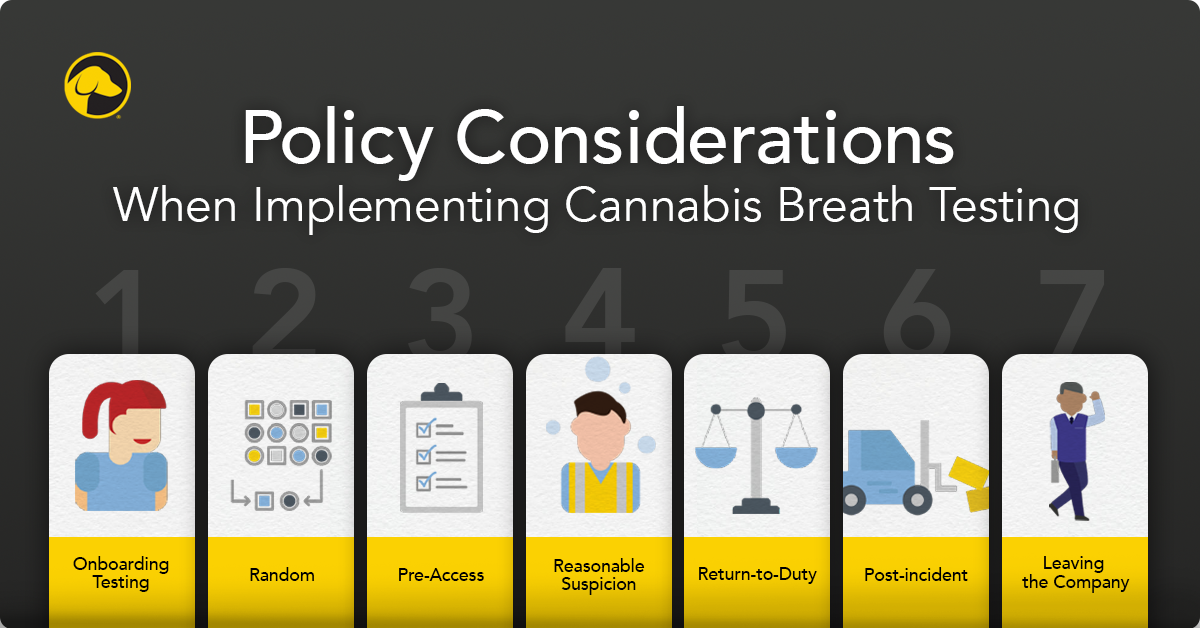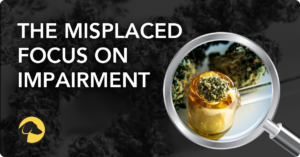
High Stakes in the Workplace: Redefining Cannabis Testing Policies
In a world where change is the only constant, it might be time to rethink how workplace cannabis testing policies are written. The era of zero-tolerance policies may be nearing its end as companies navigate strategies to achieve the intersecting objectives of countering increasing adult cannabis use, meeting recruitment and retention goals, and appropriately managing risk.
Balancing workplace safety and employee fairness in cannabis testing policies can feel like walking a tightrope, but crafting clear objectives can help. Here are five factors to consider for strengthening cannabis testing policies to emphasize deterrence, safety, and fairness.
1. EVALUATE WHY TO TEST FOR CANNABIS
As cannabis legalization expands, employers nationwide are finding fewer people who can pass an oral fluid, urine, or hair drug test because these tests can reveal cannabis use dating back days or weeks. When more and more candidates and employees fail to pass traditional cannabis tests, companies can’t fill the recruiting funnel with enough qualified applicants. However, eliminating cannabis testing is not the answer, especially when the correlation between cannabis use and workplace incidents may drive significant safety costs and reputational risks for employers.
Instead, employers may want to evaluate losses caused by employees who test positive to determine the company’s full exposure to risks. These losses may include:
- Accidents
- Theft
- Injury
- Workers’ compensation
- Litigation
- Absenteeism
- Turnover
It’s critical to evaluate if a zero-tolerance policy provides enough opportunity to continue cannabis testing and still reach hiring and retention goals. Additionally, consider the risks associated with eliminating cannabis testing.
2. DECIDE WHEN TO USE BREATH TESTING
After weighing reasons to continue testing, it’s time to outline how to implement a cannabis breath test into a workplace program to help achieve organizational goals.
It’s important to analyze the strengths and gaps in an existing cannabis testing policy at this time, and then examine how a recent use breath test can help improve those areas. Breath testing can be added in a variety of scenarios and testing timeframes to achieve your organization’s objectives. If hiring is a challenge, determine if testing during the pre-employment process addresses those concerns, or if testing during the onboarding process might create a stronger applicant funnel. Or, if employee fairness is an emerging cultural pillar, it may be important to consider if all employees will be subject to testing, or if testing will remain narrowed to certain positions.
Cannabis breath testing is applicable across a range of testing scenarios, including:
- Random – unscheduled testing of employees
- Post-Incident – testing an employee or team involved in a workplace incident
- Reasonable Suspicion – testing an employee when there is evidence or reasonable cause to suspect drug use
- Pre-Employment – testing after a conditional offer of employment is extended
- Onboarding – testing all new employees within a predefined period after their date of initial employment
- Pre-Access – testing employees for recent cannabis use upon workplace arrival
- Return-to-Duty – testing employees who are returning to work after an extended leave or after a previous positive test
In the end, though, keep in mind – a clear, legally-acceptable policy helps to ensure consistency and fairness for applicants and employees.
3. DETERMINE HOW TO ADAPT POLICIES
It’s essential to remember that, above all, cannabis testing policies should focus on deterrence, and that the goal of deterrence is a zero percent positivity rate; not zero tolerance. So, keep those goals in mind while modernizing policies. Consulting with experts and advisors about effective strategies for adapting policy language can help. Conferring with legal counsel before making any changes to existing drug testing policies is an important step. Legal counsel can provide critical guidance on how to incorporate deterrence-based language and goals into a policy.
A Medical Review Officer (MRO) may also provide insight to help balance the needs of the employer and the privacy of the employee. MROs act as the gatekeepers between the employer and the employee as it relates to accuracy in the testing process and safeguarding employees’ personal health information (PHI).
4. CONSIDER HOW TO MANAGE RESULTS
One of the toughest considerations in any cannabis testing policy is deciding how to manage test results. It’s always a good idea to consult with legal counsel regarding this topic because many states and labor unions follow specific protocols.
Before cannabis legalization became widespread, most employers could simply rely on zero-tolerance drug testing programs, terminating individuals who tested positive because the result would mean the applicant or employee violated both the law and the testing policy forbidding any use of drugs. This traditional drug testing return on investment model was fueled by positivity rates. Higher rates equated to a greater number of employees who’d used drugs being prevented from entering the workplace, thus fewer incidents and more costs saved.
Now, with cannabis legalization, use, and acceptance expanding, zero-tolerance drug testing programs are leaving employers with a nearly impossible choice – continue testing for cannabis and turn away valuable candidates and employees, or stop testing and assume the ensuing risks (i.e., more accidents, injuries, and lawsuits).
However, cannabis breath testing provides a new ROI model where negative test results successfully demonstrate the deterrence of risky, on-the-job cannabis use and the costly safety and human resources issues accompanying that use.
In the case of a recent use result, some employers have expanded their policies to include additional options for employment actions following a positive test result. For example, instead of terminating an employee for a positive test result based on past use, policies can now include second chance, stand down, or other conditional measures that take recent use into account.
5. CHOOSE HOW TO EDUCATE EMPLOYEES
Once all other considerations have been weighed and incorporated into a policy, the final step is informing and educating employees. Employers with the most effective cannabis testing policies invest time to ensure employees are fully aware of how policies will potentially impact them. The importance of this step can’t be underestimated; but clearly, there is still work to be done in this area. A 2021 National Safety Council survey of roughly 500 employers and 1,000 employees found that only 19% of employees feel their company is doing a good job informing employees about their workplace cannabis policy.
As with most initiatives, communication is key. Help employees understand what’s acceptable, what isn’t, and when tests may be performed. Additionally, explain that a breath test detects only recent use and the intent is to avoid punishing employees for choices made the day or week before the test. Lastly, it may be important to educate employees about the differences between various cannabis tests and their detection windows, helping demonstrate the reasons for adding a recent use test to the program.
WE CAN HELP
Modernizing any cannabis testing policy is a group effort. Our team at Hound Labs is prepared to help employers consider policy changes and provide resources showing how breath testing can help balance workplace safety with employee fairness.
If you would like to learn more about how to implement the HOUND® CANNABIS BREATHALYZER as part of your organization’s drug testing program, check out our new ebook or connect with our team today.

September 28, 2023
By TRICIA O'CONNOR
Director of Content + Brand Strategy
Share











